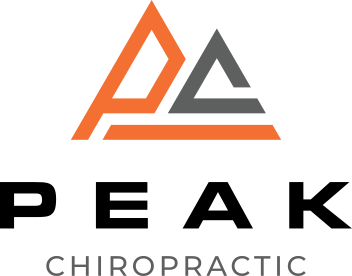Have you ever thought about how enhancing your flexibility can not only elevate your workouts but also improve your daily activities? As a chiropractor, I often see the incredible benefits that come from unlocking your body's potential for ultimate flexibility. By focusing on stretching and mobility, you can enhance your performance and significantly lower your chances of injury.
It doesn't require a huge time commitment—just 10 to 15 minutes each day can lead to remarkable improvements. However, it's essential to be aware of key techniques and common mistakes that can impede your progress. Many people are unaware of these critical nuances, which is why I encourage you to explore them further. You may be surprised at the positive impact this knowledge can have on your body and overall well-being.
Understanding Flexibility
As a local chiropractor, I want to share with you the importance of flexibility, not just as a physical ability, but as a fundamental aspect of your overall health and wellness. When you hear the term "flexibility," you might think of athletes like gymnasts or dancers, but it impacts everyone, including you. Flexibility refers to the range of motion in your joints and muscles, which is crucial for how effectively you can move and carry out your everyday activities.
Understanding flexibility involves recognizing its two main types: static and dynamic. Static flexibility is when you stretch a muscle to its limit and hold that position, while dynamic flexibility is all about your ability to move actively through a full range of motion. Both types are essential for maintaining a healthy body.
You may not realize that several factors, such as age, gender, and your level of physical activity, can influence your flexibility. Typically, younger individuals tend to be more flexible, but the good news is that you can improve your flexibility at any age. Incorporating regular stretching, yoga, or Pilates can significantly enhance your range of motion. This improvement not only makes physical activities, like sports, more enjoyable but also helps with everyday tasks, such as bending down to tie your shoes.
As you embark on your journey to better flexibility, it's crucial to listen to your body. Overstretching or pushing too hard can lead to injury, so I encourage you to focus on gradual improvements. Pay attention to areas where you may feel tightness and dedicate time to those specific muscles.
As you develop a deeper understanding of your body's flexibility, you'll find it easier to incorporate stretching routines into your daily life, which will greatly contribute to your overall fitness and wellness.
At our chiropractic practice, we emphasize the connection between flexibility and spinal health. By improving your flexibility, you can enhance your posture and reduce the risk of injury, leading to a healthier, more active lifestyle. Let's work together on this journey to better health and well-being!
Benefits of Increased Flexibility
As a local chiropractor, I want to share with you the incredible benefits of increased flexibility and how it can enhance your daily life. When you work on improving your flexibility, you expand your range of motion. This means everyday activities—like reaching for items on a top shelf or bending down to tie your shoes—become easier and less taxing on your body.
One of the key advantages of increased flexibility is the significant reduction in the risk of injury. Flexible muscles and joints are much better prepared to handle unexpected movements, which helps to lower the chances of strains or sprains. This is particularly crucial for those of you who are athletes or engage in any physical activities. Maintaining flexibility can truly be a game-changer when it comes to preventing injuries.
Additionally, enhanced flexibility plays a vital role in improving your posture. When your muscles and joints are flexible, they can better support your body, resulting in improved alignment that lessens the strain on your spine and entire body. Good posture not only enhances your physical appearance but also alleviates pain and discomfort that can arise from sitting or standing for long periods.
You may also discover that increased flexibility can boost your athletic performance. Regardless of whether you enjoy running, swimming, or practicing yoga, being more flexible allows for greater efficiency and power in your movements.
Don't forget about the mental benefits either; a flexibility routine often includes mindfulness practices, which can help relieve stress and enhance your focus.
In essence, embracing flexibility is a crucial step toward a healthier and more vibrant lifestyle. As your chiropractor, I encourage you to explore how increasing your flexibility can unlock your body's potential for better health and well-being.
Why not take the first steps toward a more flexible you today?
Key Techniques for Flexibility
As a chiropractor dedicated to natural healing and wellness, I want to emphasize the importance of flexibility in maintaining your overall health.
To enhance your flexibility, it's crucial to incorporate both dynamic and static stretching into your routine. Dynamic stretching is a fantastic way to warm up your muscles, getting them ready for movement and reducing the risk of injury. On the other hand, static stretching plays a vital role in lengthening those muscles and improving your overall range of motion.
By integrating these two techniques, you can unlock your body's full potential, allowing for better mobility and function.
Understanding how to properly implement these stretches can lead to significant benefits in your daily life and overall well-being.
Let's work together to explore these methods and how they can support your journey to better health.
Dynamic Stretching Benefits
Dynamic stretching is an invaluable practice that can greatly enhance your flexibility and prepare your muscles for physical activity. As a local chiropractor, I want to share with you how this method differs from static stretching, which involves holding a position.
Dynamic stretching, on the other hand, incorporates movement, actively engaging your muscles and joints. This approach not only helps improve your range of motion but also increases blood flow to your muscles, which is essential for reducing the risk of injuries during your workouts.
When you engage in dynamic stretches, such as leg swings or arm circles, you activate your core and enhance your balance. These exercises closely mimic the movements of the activities you plan to undertake, making them especially advantageous for anyone looking to improve their physical performance.
You'll find that dynamic stretching effectively prepares your body for high-intensity workouts, ensuring that you're primed to perform at your best.
Integrating dynamic stretches into your warm-up routine can also significantly boost your overall athletic performance. You may notice improvements in coordination and agility, allowing for more efficient movement.
Additionally, the increased flexibility gained from dynamic stretching can contribute to better posture and reduced muscle tension.
Static Stretching Techniques
As a chiropractor, I want to emphasize the importance of both dynamic and static stretching in your overall health and wellness journey. While dynamic stretching is fantastic for warming up your body before physical activity, static stretching is crucial for enhancing flexibility and aiding muscle recovery after exercise.
By integrating static stretching into your routine, you can significantly improve your range of motion and reduce muscle soreness, which is vital for maintaining long-term mobility and preventing injuries.
To begin, focus on key muscle groups that often need attention, such as your hamstrings, quadriceps, hip flexors, and shoulders. Aim to hold each stretch for 15 to 30 seconds, ensuring you breathe deeply to help relax your muscles.
For instance, to stretch your hamstrings, sit on the floor with one leg extended, and gently reach toward your toes. Be sure to keep your back straight and avoid any bouncing movements, as this can increase the risk of injury.
Another beneficial stretch is the standing quadriceps stretch. Stand on one leg, grasp your ankle, and carefully pull your heel towards your glutes. Keep your knees close together and maintain your balance while holding the position. Don't forget to switch sides to ensure both legs receive equal attention.
Incorporating these static stretching techniques into your post-workout routine can greatly enhance your flexibility, lengthen your muscles, and contribute to your overall well-being.
Consistency is vital, so I encourage you to make static stretching a regular part of your routine. This will help unlock your body's full potential, leading to improved health and vitality.
Effective Stretching Exercises
As a chiropractor dedicated to helping you achieve optimal health and mobility, I want to emphasize the importance of incorporating effective stretching exercises into your daily routine. These exercises can significantly enhance your flexibility and overall movement, which is crucial for maintaining a healthy body.
Let's start with a fundamental stretch: the standing quadriceps stretch. Stand on one leg and gently pull your opposite foot toward your buttocks, grasping your ankle with your hand. Remember to keep your knees close together and hold this stretch for 20-30 seconds. This stretch is particularly beneficial for your quadriceps, muscles that play a vital role in activities such as running and jumping.
Next, I encourage you to try the seated hamstring stretch. Sit comfortably on the floor, extending one leg while bending the other. Reach towards your extended foot, ensuring that your back remains straight. Hold this position for 20-30 seconds, and you should feel a pleasant stretch along the back of your thigh. This exercise is essential for maintaining flexibility in your hamstrings, which supports overall leg mobility and prevents injuries.
Don't overlook the butterfly stretch! Sit with your feet together and gently push your knees toward the ground. Maintain this position for 20-30 seconds to improve flexibility in your inner thighs and hips—areas that are crucial for proper squatting and lunging movements, which can enhance your functional fitness.
Lastly, I recommend incorporating the cat-cow stretch into your routine. Begin on all fours and alternately arch your back upwards and then lower it while lifting your head. This dynamic stretch serves to warm up your spine and promotes greater flexibility in your back, which is essential for overall spinal health.
Incorporating Flexibility Into Your Routine
As a local chiropractor, I want to emphasize the importance of incorporating flexibility exercises into your daily routine for improved well-being and physical performance. Flexibility training can significantly enhance your range of motion, alleviate muscle tension, and reduce the risk of injuries—key factors in maintaining a healthy spine and overall body function.
I encourage you to set aside just 10 to 15 minutes each day dedicated to flexibility exercises. Consistency is crucial, so aim to make this a regular part of your daily schedule.
Start with dynamic stretches during your warm-up. These movements, such as leg swings, arm circles, or torso twists, prepare your muscles for activity and increase blood flow, which is vital for spinal health.
After your workout, transition to static stretching, holding each stretch for 15 to 30 seconds. Focus on major muscle groups like the hamstrings, quadriceps, shoulders, and back, as these areas often influence spinal alignment and posture.
You can also integrate flexibility exercises into your everyday life. For instance, while watching TV, take a moment to stretch your legs or back. If you spend long hours at a desk, incorporate stretching during breaks to counteract the negative effects of prolonged sitting, which can lead to misalignments and discomfort.
Consider joining a yoga or Pilates class as well. These practices focus heavily on flexibility and can provide you with structured guidance. Not only do they enhance your flexibility, but they also promote relaxation and mindfulness, which are essential for managing stress and maintaining a healthy spine.
Common Mistakes to Avoid
As a chiropractor, I often see patients who are eager to improve their flexibility but may not realize some common mistakes that can hinder their progress.
One of the biggest pitfalls is rushing into overstretching without properly warming up. It might seem like a time-saver, but neglecting a warm-up can actually increase your risk of injury and stall your flexibility gains.
It's crucial to take a few minutes to prepare your muscles and joints before diving into stretching routines. A gentle warm-up can enhance blood flow and promote better performance.
Overstretching Muscles Too Quickly
As a chiropractor, I want to emphasize the importance of proper stretching techniques to help you on your journey towards improved flexibility. Many individuals, eager to enhance their range of motion, often rush into stretching too aggressively, which can lead to injuries and setbacks.
It's a common misconception that pushing your body harder will yield better results. Unfortunately, this can result in strains, tears, and in some cases, long-term damage to your muscles and ligaments.
To protect your body, it's crucial to listen to what it tells you. If you experience sharp pain or significant discomfort while stretching, it's a signal to stop. Gradual progression is key—allow your muscles to adjust over time rather than forcing them into extreme positions too quickly.
I encourage you to incorporate a diverse range of stretches that target various muscle groups. This balanced approach not only helps enhance your flexibility but also minimizes the risk of overstretching any single muscle.
Additionally, be mindful of your breathing during stretches; it can serve as a helpful guide in determining the right intensity for your body.
Remember, the goal is to cultivate a sustainable stretching routine that promotes overall health and well-being, paving the way for a more flexible and pain-free lifestyle.
If you have any questions or need personalized guidance, don't hesitate to reach out. Your health is our priority!
Neglecting Warm-Up Routines
As a local chiropractor, I want to emphasize the importance of warm-up routines for your flexibility and overall health. Skipping these crucial steps can significantly hinder your progress and increase your risk of injury. When you jump right into stretching or flexibility exercises without a proper warm-up, you're putting undue stress on your muscles and joints, which can lead to strains, tears, and setbacks in your fitness journey.
A proper warm-up is essential; it increases blood flow to your muscles, raises your body temperature, and helps you mentally prepare for the workout ahead.
I recommend incorporating dynamic movements that mimic the activities you'll be engaging in, such as leg swings, arm circles, and gentle twists. These movements activate your muscles and joints, helping them perform better.
Neglecting this vital step not only puts your safety at risk but can also limit your performance. After a good warm-up, you'll likely notice a marked improvement in your range of motion, allowing you to stretch deeper and more effectively.
Skipping Recovery Time
As a local chiropractor, I often see patients who underestimate the significance of recovery time when it comes to improving flexibility. Many believe that pushing through every stretching session will lead to quicker results, but this mindset can actually be counterproductive.
Neglecting recovery can result in fatigue, increased muscle tension, and even injuries— all of which can impede your journey towards better flexibility.
When you stretch or participate in flexibility training, you create tiny tears in your muscle fibers. Recovery is crucial because it allows these muscles to heal and become stronger.
If you don't allow your body enough time to rest, you may experience overtraining, which can diminish the benefits of your hard work.
It's essential to incorporate rest days into your routine. Pay attention to your body—if you're feeling sore or fatigued, it's a sign that you need a break.
Engaging in active recovery, such as gentle stretching or yoga, can also be incredibly helpful. This approach keeps your muscles active without putting them under excessive strain.
As a chiropractor, I encourage you to prioritize recovery as an integral part of your flexibility training regimen. Your body will thank you for it!
Conclusion
Unlocking your body's potential for ultimate flexibility is not only essential for your physical health but also plays a crucial role in your overall well-being. As a chiropractor, I want to emphasize that achieving greater flexibility goes beyond mere stretching; it's about nurturing your body holistically.
Incorporating both dynamic and static stretches into your daily routine can significantly enhance your mobility, reduce the risk of injuries, and improve your overall performance in daily activities. It's important to stay consistent with your practice and to listen to your body as you try out different techniques.
I encourage you to explore practices such as yoga or Pilates, which can deepen your connection with your body and enhance your flexibility. These methods not only promote physical health but also support mental and emotional well-being.
Starting your journey toward enhanced flexibility today can lead to transformative changes in your life. As your chiropractor, I'm here to guide you through this process and help you unlock your body's full potential. Let's work together to achieve a healthier and more flexible you!



